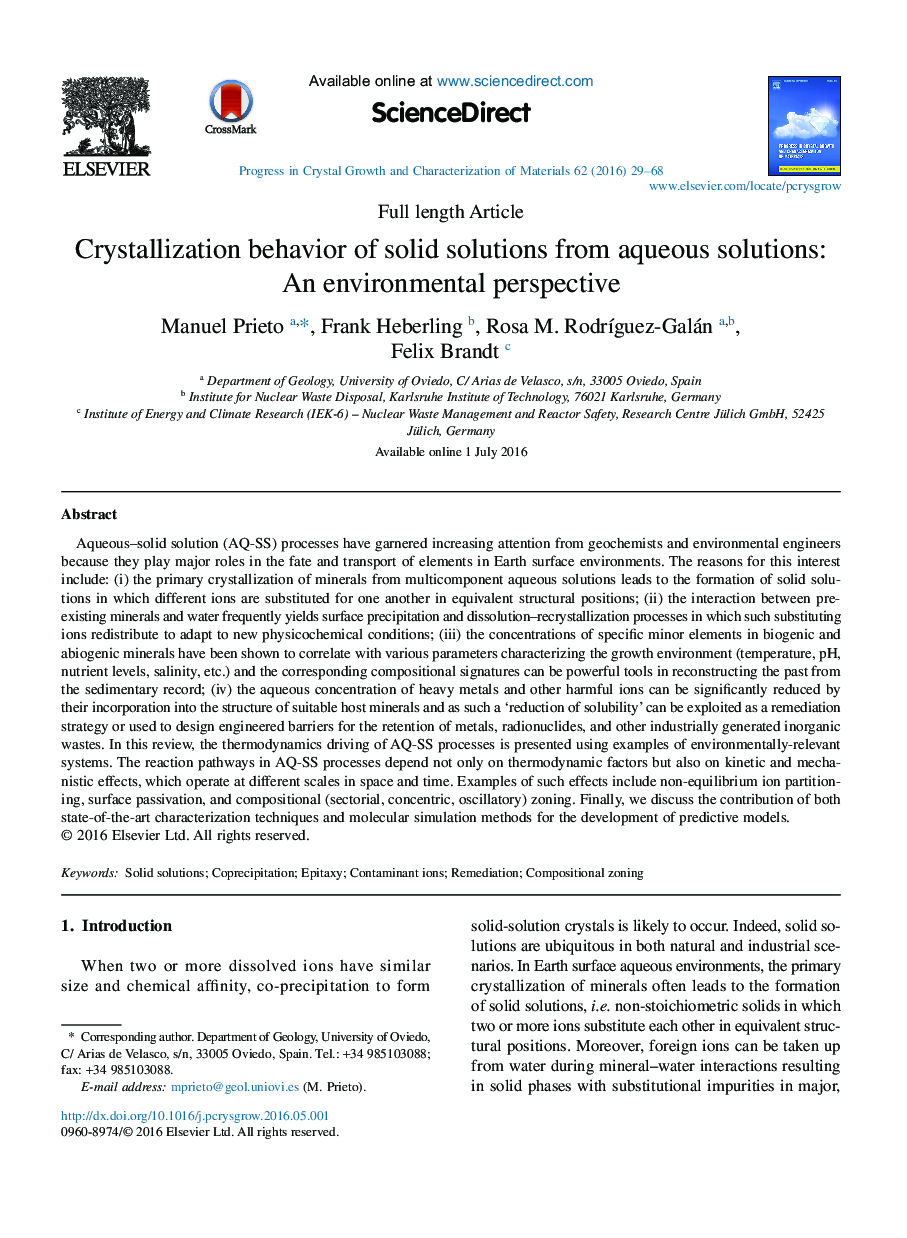| کد مقاله | کد نشریه | سال انتشار | مقاله انگلیسی | نسخه تمام متن |
|---|---|---|---|---|
| 1590542 | 1515413 | 2016 | 40 صفحه PDF | دانلود رایگان |
عنوان انگلیسی مقاله ISI
Crystallization behavior of solid solutions from aqueous solutions: An environmental perspective
ترجمه فارسی عنوان
رفتار بلوری کردن راه حل های جامد از محلول های آبی: چشم انداز زیست محیطی
دانلود مقاله + سفارش ترجمه
دانلود مقاله ISI انگلیسی
رایگان برای ایرانیان
کلمات کلیدی
راه حل های جامد، هم رسوبی، اپیتاکسی، یون های آلاینده، بهبود منطقه بندی کامپوزیتی
موضوعات مرتبط
مهندسی و علوم پایه
مهندسی مواد
دانش مواد (عمومی)
چکیده انگلیسی
Aqueous-solid solution (AQ-SS) processes have garnered increasing attention from geochemists and environmental engineers because they play major roles in the fate and transport of elements in Earth surface environments. The reasons for this interest include: (i) the primary crystallization of minerals from multicomponent aqueous solutions leads to the formation of solid solutions in which different ions are substituted for one another in equivalent structural positions; (ii) the interaction between pre-existing minerals and water frequently yields surface precipitation and dissolution-recrystallization processes in which such substituting ions redistribute to adapt to new physicochemical conditions; (iii) the concentrations of specific minor elements in biogenic and abiogenic minerals have been shown to correlate with various parameters characterizing the growth environment (temperature, pH, nutrient levels, salinity, etc.) and the corresponding compositional signatures can be powerful tools in reconstructing the past from the sedimentary record; (iv) the aqueous concentration of heavy metals and other harmful ions can be significantly reduced by their incorporation into the structure of suitable host minerals and as such a 'reduction of solubility' can be exploited as a remediation strategy or used to design engineered barriers for the retention of metals, radionuclides, and other industrially generated inorganic wastes. In this review, the thermodynamics driving of AQ-SS processes is presented using examples of environmentally-relevant systems. The reaction pathways in AQ-SS processes depend not only on thermodynamic factors but also on kinetic and mechanistic effects, which operate at different scales in space and time. Examples of such effects include non-equilibrium ion partitioning, surface passivation, and compositional (sectorial, concentric, oscillatory) zoning. Finally, we discuss the contribution of both state-of-the-art characterization techniques and molecular simulation methods for the development of predictive models.
ناشر
Database: Elsevier - ScienceDirect (ساینس دایرکت)
Journal: Progress in Crystal Growth and Characterization of Materials - Volume 62, Issue 3, September 2016, Pages 29-68
Journal: Progress in Crystal Growth and Characterization of Materials - Volume 62, Issue 3, September 2016, Pages 29-68
نویسندگان
Manuel Prieto, Frank Heberling, Rosa M. RodrÃguez-Galán, Felix Brandt,
